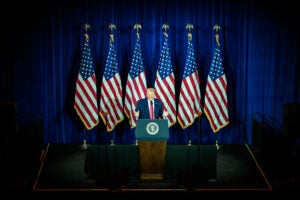
As the most rapidly evolving subset of the U.S. military, Special Operations Command (SOCOM) has high demand for technically advanced, open architecture equipment for individual troops.Army Gen. Raymond Thomas, chief of SOCOM, said Feb. 14 that special operators are aggressively persuing commercial-off-the shelf solutions to their combat need. Every high-tech piece of gear SOCOM buys also needs to be modular and accept rapid upgrades.“All of these upgrades and desires for future capability are irretrievably linked to the need for rapid…

 By
By 











